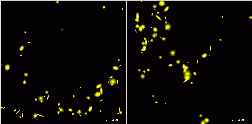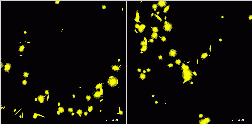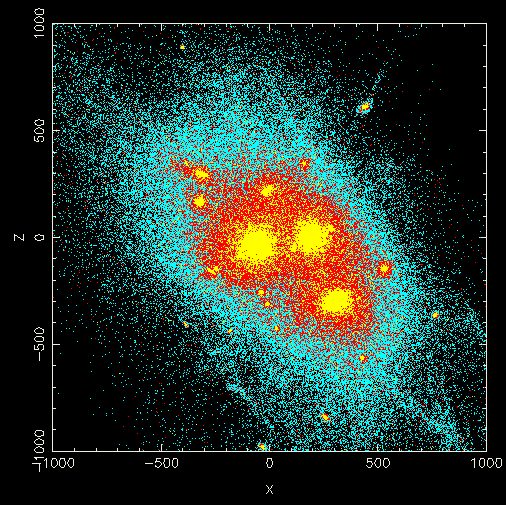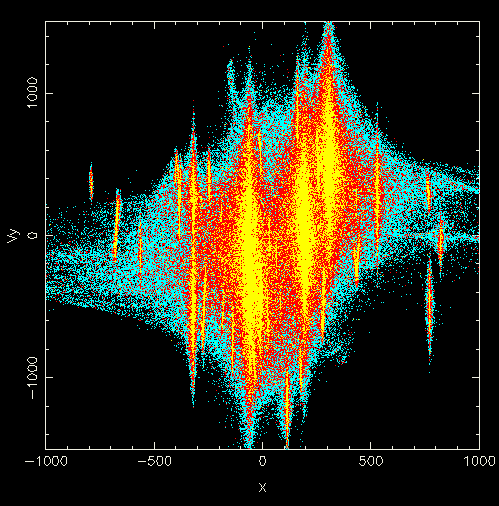CWRU students: Cameron McBride (Pittsburgh), Nathan Kaib (Washington), Steve Rodney (Hawaii)
When did it form? How did it form?
Deep imaging of Abell 1914 from Feldmeier
etal 2004
|
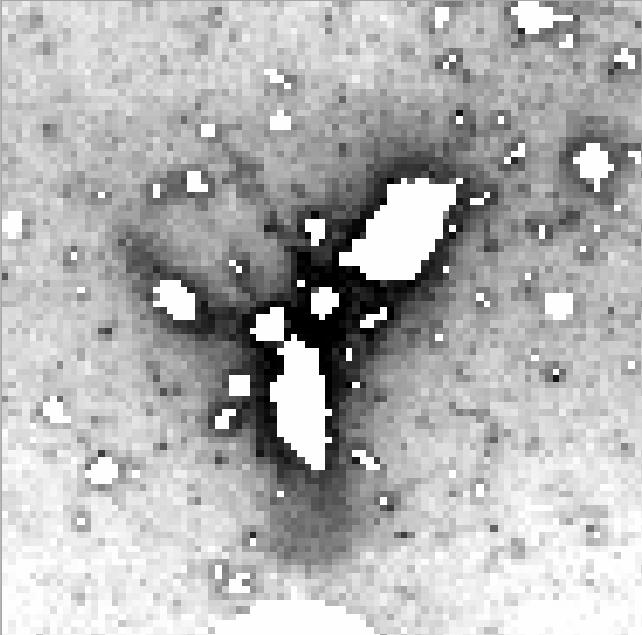
|
Theoretical work has largely focused on tidal stripping of individual galaxies in a fixed potential well (eg Merritt 1983; Richstone & Malamuth 1983; Moore etal 1996; Calcaneo-Roldan etal 2000) and ignored two important effects: preprocessing in groups , and heating by substructure (Gnedin 2003).
Full cosmologically-motivated simulations are needed to study the phenomenon (eg Dubinski etal 2000; Napolitano etal 2003; Mihos etal 2004 ).


